Who doesn’t love a plate of perfectly golden and crispy French fries? These delectable potato sticks have taken over taste buds around the world, and it’s no wonder why. Whether enjoyed as a side dish or a snack, French fries are the epitome of comfort food. In this article, we’re diving into the art of making the ultimate French fries at home. Get ready to learn the secrets to achieving that perfect crunch and flavor explosion in every bite!
[ez-toc]
History
French fries – those crispy, golden sticks of potato goodness – have captured the hearts and taste buds of people all over the world. But did you know that the origin of these beloved treats is not as straightforward as their name suggests? Let’s take a journey back in time to uncover the fascinating history of the French fries recipe.
The Belgian Beginnings
Contrary to popular belief, the tale of French fries doesn’t start in France. The roots of this delectable dish can be traced back to Belgium, where villagers in the late 17th century were busy frying up thin strips of potatoes as a substitute for fish during the winter months when the rivers were frozen. It was their clever way of making the most of what they had.
The “French” Connection
So, how did these Belgian potato delights become associated with France? The story goes that American soldiers stationed in Belgium during World War I were introduced to these crispy wonders. The soldiers, encountering them in the French-speaking part of Belgium, dubbed them “French fries.” The name stuck, and soon these fries became a sensation in the United States.
Rise to Global Fame
From the American soldiers’ plates, French fries rapidly made their way to diners, fast-food joints, and restaurants around the world. Their simple yet addictive flavor and satisfying crunch won over hearts across continents. As fast-food chains gained popularity, French fries became a staple on nearly every menu, often served alongside burgers or fried chicken.
The Perfect Sidekick
The beauty of French fries lies in their versatility. They can be enjoyed as a quick snack, a side dish, or even a main course when loaded with toppings. In the culinary world, French fries have evolved beyond the basic salted version. Creative chefs and home cooks have experimented with various seasonings, sauces, and even different types of potatoes to create unique twists on the classic recipe.
A Global Delight
Today, French fries are a global phenomenon. From the bustling streets of New York City to the charming cafes of Paris, you can find variations of this humble dish everywhere. And while they might not have originated in France, there’s no denying the universal appeal of French fries.
A Culinary Legacy
The journey of French fries from the snowy villages of Belgium to becoming an international culinary sensation is a testament to the power of food to transcend borders and cultures. They’ve found their way onto the tables of fast-food lovers and food connoisseurs alike, uniting people with a shared love for crispy, golden perfection.
Time
| Step | Time Needed |
|---|---|
| Choosing the Right Potatoes | 5 minutes |
| Preparing the Potatoes | 15 minutes |
| The Double Fry Technique | 30 minutes |
| Seasoning: Beyond Basic Salt | 5 minutes |
| Dipping Sauces Galore | 10 minutes |
| Getting Creative: Unique Variations | 10 minutes |
Ingredients
| Ingredients | Quantity |
|---|---|
| Russet Potatoes | 2 large |
| Vegetable Oil | 4 cups |
| Salt | To taste |
| Optional Seasonings | As desired |
| Dipping Sauces | Variety |
Directions
Step 1: Choosing the Right Potatoes
- Start by selecting 2 large russet potatoes. These potatoes are ideal for achieving that coveted crispy exterior and fluffy interior.
Step 2: Preparing the Potatoes
- Wash the potatoes thoroughly to remove excess dirt and starch.
- Peeling is optional – leave the skins on for added texture and nutrients.
- Cut the potatoes into uniform sticks, about a quarter-inch thick. A mandoline or sharp knife works well.
- Place the cut potatoes in a bowl of cold water to prevent browning. Let them soak for about 15 minutes, then drain and pat dry.
Step 3: The Double Fry Technique
- In a large, heavy-bottomed pot, heat 4 cups of vegetable oil to 325°F (165°C).
- Carefully lower a handful of the prepared potato sticks into the oil, avoiding overcrowding.
- Fry the potatoes for about 5-7 minutes, or until they’re cooked but not yet crispy. They should have a slight golden color.
- Remove the partially fried potatoes and place them on a paper towel-lined plate to drain.
- Allow the fries to cool for about 10 minutes.
Step 4: Seasoning: Beyond Basic Salt
- After the fries have cooled slightly, it’s time to season them. Start with a sprinkle of salt – you can adjust the amount according to your taste.
- Feel free to get creative with your seasonings. Try garlic powder, paprika, or even a touch of cayenne for some heat.
- Toss the fries gently to ensure even distribution of the seasonings.
Step 5: Dipping Sauces Galore
- Prepare an array of dipping sauces to accompany your fries. Ketchup is a classic, but don’t stop there.
- Experiment with mayo-based sauces like garlic aioli or try a tangy BBQ sauce for a flavor punch.
- Arrange the dipping sauces in small bowls for easy access.
Step 6: Getting Creative: Unique Variations
- If you’re feeling adventurous, try making sweet potato fries for a healthier twist.
- For a gourmet touch, make shoestring fries and top them with truffle oil and grated Parmesan cheese.
- Let your imagination run wild and customize your fries with unique toppings and seasonings.
Equipment Required
Nutrition Information
| Nutrition Information | Per Serving |
|---|---|
| Serving Size | 1/2 of recipe |
| Calories | ~250 kcal |
| Total Fat | ~15g |
| Saturated Fat | ~1.5g |
| Trans Fat | 0g |
| Cholesterol | 0mg |
| Sodium | Varies |
| Total Carbohydrates | ~25g |
| Dietary Fiber | ~2g |
| Sugars | 0g |
| Protein | ~2g |
| Vitamin D | 0% DV |
| Calcium | 0% DV |
| Iron | 6% DV |
| Potassium | 8% DV |
Note: Nutritional values may vary based on specific ingredients and portion sizes.
Tips
- Temperature Precision: Invest in a kitchen thermometer to ensure your oil maintains the right temperature throughout frying. Consistent heat leads to even cooking and that satisfying crunch.
- Patience Pays: Allow the potatoes to cool between the double frying process. This helps the interior cook evenly and prevents the exterior from getting too dark too quickly.
- Prevent Sogginess: Soaking the cut potatoes in cold water removes excess starch, which can lead to soggy fries. Ensure they’re thoroughly dried before frying.
- Mind the Size: Cutting your potato sticks uniformly ensures they cook evenly. A mandoline or a French fry cutter can be handy for achieving consistent sizes.
- Seasoning Strategy: Season the fries as soon as they come out of the oil while they’re still hot. This helps the seasonings adhere and infuse the flavor.
Pros & Cons
| Pros | Cons |
|---|---|
| ✅ Homemade & Fresh | ❌ High in Calories |
| ✅ Customizable Seasonings | ❌ High Fat Content |
| ✅ Crispy & Crunchy | ❌ Requires Frying |
| ✅ Enjoyable Snack | ❌ Potential for Oil Splatters |
| ✅ Versatile & Addictive | ❌ Not Ideal for Restricted Diets |
Conclusion
As we wrap up our journey through the world of homemade French fries, it’s clear that these golden delights hold more than just incredible flavors. They encompass history, creativity, and the joy of crafting your own culinary masterpieces. From selecting the perfect potatoes to mastering the double fry technique, you’ve learned the secrets behind achieving that coveted crunch and irresistible taste.
Remember, making French fries isn’t just about following a recipe; it’s about infusing your personal touch and experimenting with flavors that excite your taste buds. Whether you’re a novice in the kitchen or a seasoned cook, this recipe invites you to explore, innovate, and create a plate of fries that truly resonates with your preferences.
So, gather your ingredients, embrace the sizzle of hot oil, and allow your kitchen to fill with the delightful aroma of homemade French fries. The reward is not only a plate of deliciousness but the satisfaction of knowing you’ve mastered an art that has delighted taste buds for generations. Whether you’re enjoying them solo, with friends, or as a side to your favorite meal, these fries promise to be more than just a dish – they’re an experience. So, put on your apron and embark on a culinary adventure that’s bound to leave you craving more. Your taste buds will thank you for taking the plunge into the world of homemade French fries!
Facts
- Fact 1: The “French” in French Fries
- Did you know? French fries might not be French at all! These beloved treats actually have Belgian roots, but they earned the name “French” during World War I when American soldiers encountered them in the French-speaking part of Belgium. 🇧🇪🍟
- Fact 2: Potato Artistry – The Double Fry Technique
- Craving that perfect crunch? The double fry technique isn’t just culinary magic – it’s science! The initial fry at a lower temperature cooks the potato interior, while the second fry at a higher temperature creates the crispy exterior we all love. ✨🔥
- Fact 3: A Colorful History
- Think fries are always golden? Think again! In some parts of the world, you’ll find fries colored in shades of blue, purple, and even orange. These colorful variations are often made from unique potato varieties rich in antioxidants. 🌈🥔
- Fact 4: The Potato King’s Rebellion
- In the 18th century, French fries faced an unexpected adversary – King Louis XVI of France! Legend has it that he despised potatoes and thought they were fit only for animals. It wasn’t until French culinary pioneer Antoine-Augustin Parmentier promoted the humble spud that potatoes gained popularity. 👑🥔
- Fact 5: Fry-Day Frenzy
- Did you know that Friday is unofficially recognized as National French Fry Day in the United States? It’s a celebration of this iconic comfort food that has become a beloved staple in cultures around the globe. So, mark your calendar for a fry-day feast! 🎉🍟
FAQ’s
Can I use a different type of potato for making French fries?
While russet potatoes are best for their crispy texture, you can experiment with Yukon Gold or red potatoes. Keep in mind that the results might vary in terms of crunchiness.
Can I reuse the frying oil for making French fries again?
It’s not recommended to reuse frying oil multiple times as it can become less stable and affect the flavor of the fries. Dispose of used oil responsibly.
Can I bake the fries instead of frying them?
Absolutely! Baking is a healthier alternative. Preheat your oven to 425°F (220°C), coat the potato sticks with a bit of oil, spread them on a baking sheet, and bake for about 20-25 minutes, flipping once halfway through.
How do I prevent my fries from turning out too oily?
To prevent excessively oily fries, make sure the oil is at the right temperature (around 325°F for the first fry). Proper draining on paper towels after frying also helps remove excess oil.
What’s the best oil for frying French fries?
Oils with high smoke points like canola, peanut, or vegetable oil are best for frying to achieve that desired crispy texture.
Can I make frozen fries using this recipe?
While this recipe focuses on making fries from scratch, you can still apply some of the techniques for enhancing store-bought frozen fries.
How can I reheat leftover French fries to retain their crispiness?
To reheat fries, place them on a baking sheet in a preheated oven at 400°F (200°C) for about 5-7 minutes. This can help regain some of their initial crunchiness.
Why did my fries turn out soggy even though I followed the recipe?
Soggy fries could be due to excess moisture on the potatoes before frying or inadequate draining after frying. Make sure to pat the cut potatoes dry and allow them to drain properly.
Can I use an air fryer to make French fries?
Absolutely! An air fryer can yield crispy fries with less oil. Coat the potato sticks with a bit of oil and air fry at around 375°F (190°C) for 20-25 minutes, shaking the basket occasionally.
Are there any alternatives to traditional ketchup for dipping?
Absolutely! Try dipping your fries in mayonnaise, ranch dressing, sriracha mayo, or even a tangy mustard sauce for a delightful change of flavor.






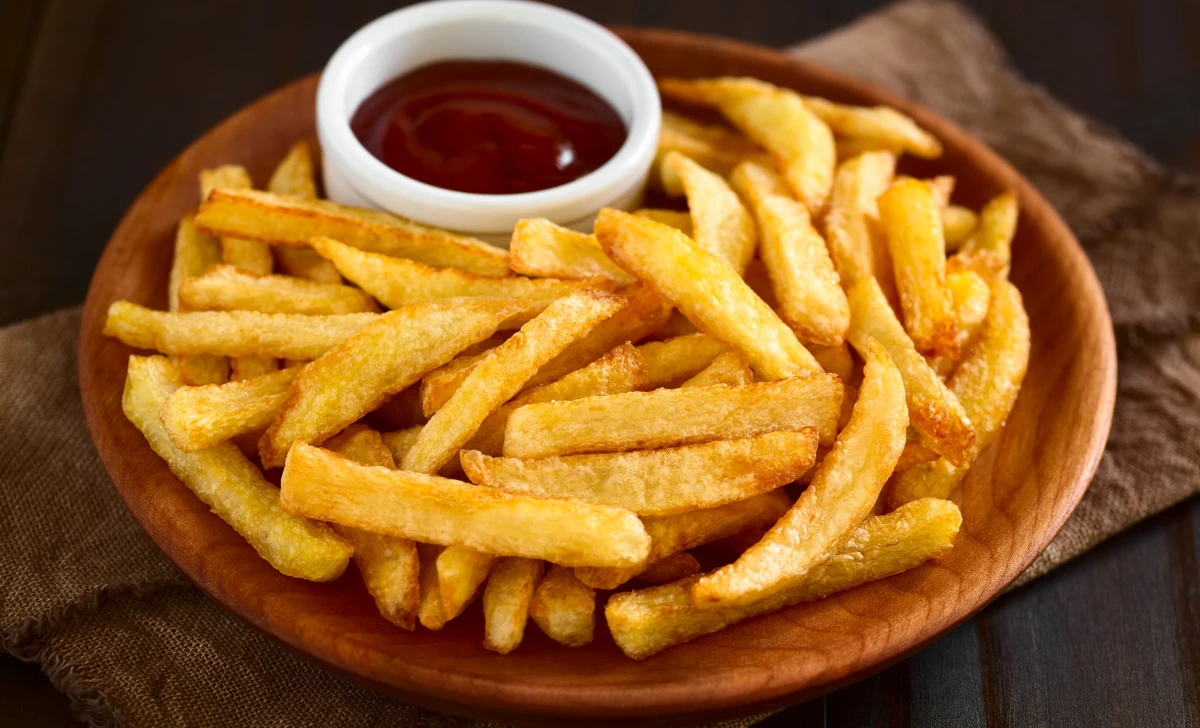

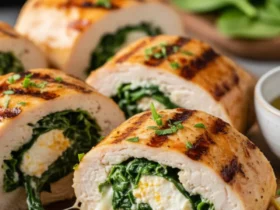
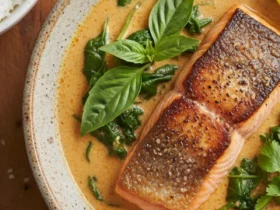
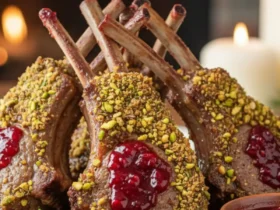
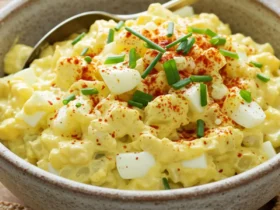
Leave a Review